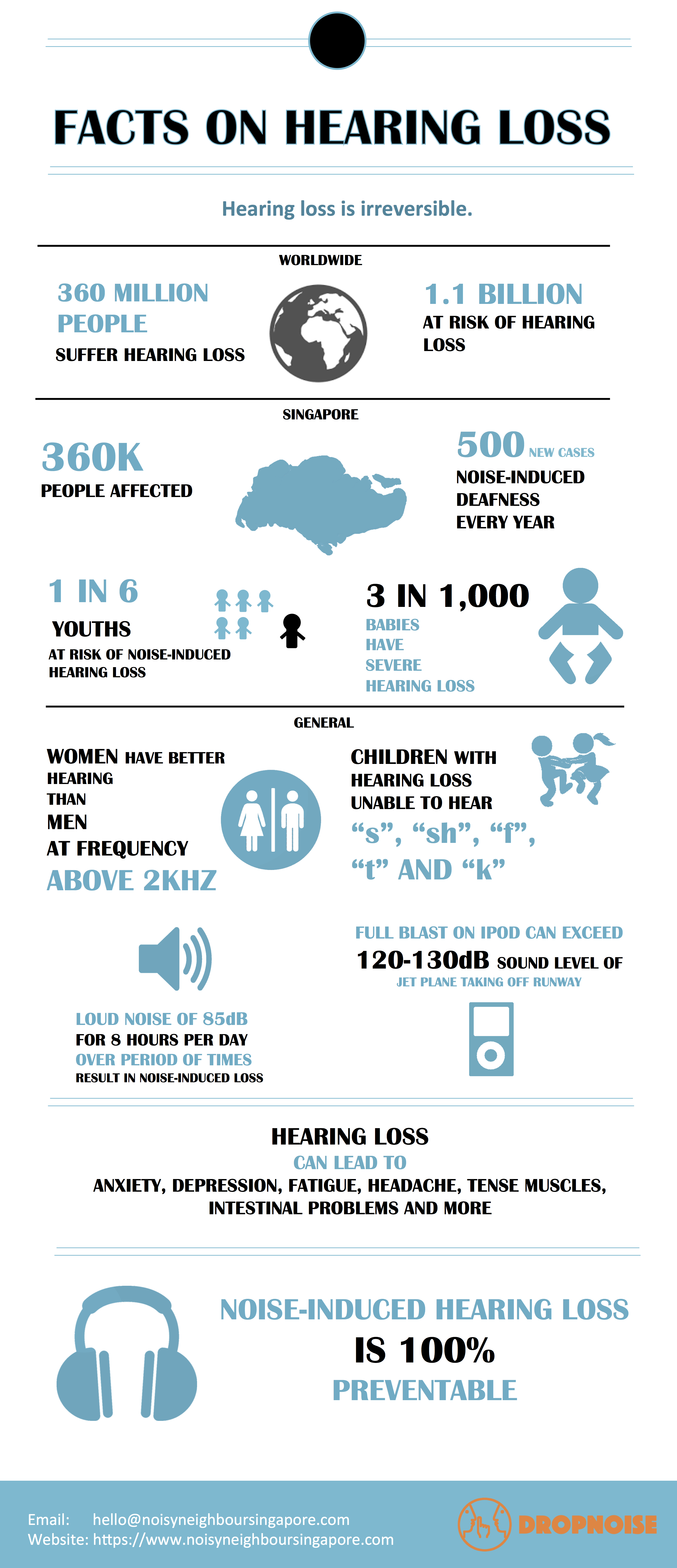- Hearing loss is irreversible.
(https://en.wikipedia.org/wiki/Sensorineural_hearing_loss)
- 360 million people (328 million adults and 32 million children) worldwide have disabling hearing loss
(http://www.who.int/mediacentre/factsheets/fs300/en/)
- 1.1 billion people at risk of hearing loss
(http://www.who.int/mediacentre/news/releases/2015/ear-care/en/)
- Hearing loss is common in Singapore, with more than 360,000 persons affected.
(http://www.annals.edu.sg/cpdMay05.html)
- Noise-induced deafness is the number one occupational disease in Singapore. Each year over 500 new cases are detected by the Department of Industrial Health.
(http://www.annals.edu.sg/cpdMay05.html)
- 1 in 6 youths in Singapore at risk of noise-induced hearing loss – Straits Times
- In Singapore, every baby receives a hearing test at birth – SingHealth
- 3 in 1,000 babies born in Singapore have severe or profound hearing loss, and 5 of every 1,000 have lesser degrees of hearing loss.
- Children suffering from hearing loss often unable to hear speech sounds such as “s,” “sh,” “f,” “t,” and “k”. Thus, speech may be difficult to understand.
(http://www.asha.org/public/hearing/Effects-of-Hearing-Loss-on-Development/)
- Women have better hearing than men at frequencies above 2Khz – University of Washington Medical Center; , University of Washington Medical Center, Virginia Merrill Bloedel Hearing Research Center
(http://www.medscape.com/viewarticle/719262_5)
- Noise-induced hearing loss is related to a person’s genes. Some people are more likely than others to develop noise-induced hearing loss when they listen to certain sounds.
(http://www.noisyplanet.nidcd.nih.gov/press/Pages/nihlfacts.aspx)
- Loud noise of 85 dB for more than 8 hours per day over prolonged periods of time can result in noise-induced deafness.
(http://www.annals.edu.sg/cpdMay05.html)
- You may suffer a ruptured eardrum when exposed to sound levels at 150dB without any ear protection.
- Listening to music at full blast on your iPod and MP3 player with in-ear earphones can actually exceed the sound level (120-130 decibels) of a jet plane taking off the runway.
- Hair dryer when set on high mode can reach 95 dB and cause damage to ears.
(http://www.prevention.com/health/health-concerns/prevent-and-reverse-hearing-loss)
- Hearing loss can lead to anxiety, depression, fatigue, headache, tense muscles and intestinal problems.
(https://myhearingcenters.com/blog/the-unknown-physical-side-effects-of-hearing-loss/)
- Noise-induced hearing loss is 100% preventable.
(http://www.noisyplanet.nidcd.nih.gov/press/Pages/nihlfacts.aspx)



